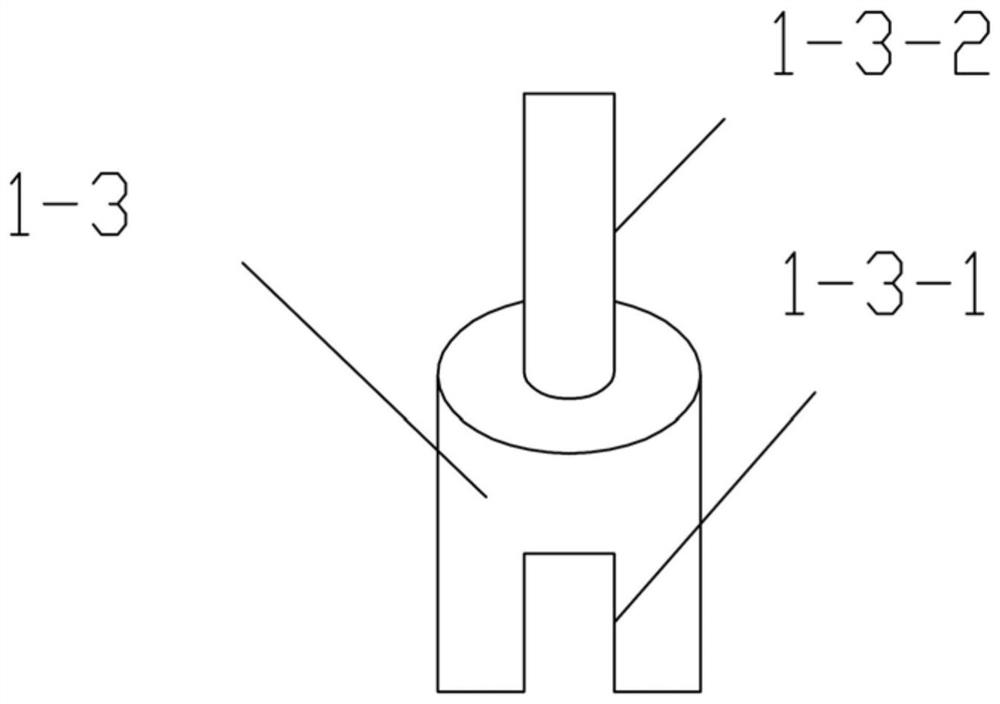An Interlocking Intramedullary Nail Applicable to Metaphyseal Fracture Bone Defects
A technology for fractured bones and metaphysis, applied in the field of interlocking intramedullary nails, can solve the problems of affecting the movement of the affected limb, limited movement, prone to fracture, etc., and achieves the benefits of fracture healing, elimination of abnormal activities, and good mechanical strength. Effect
- Summary
- Abstract
- Description
- Claims
- Application Information
AI Technical Summary
Problems solved by technology
Method used
Image
Examples
Embodiment 1
[0036] For fractures or bone defects located at the distal end of the inserted main screw, after the fracture end is reduced, use the nut end of the sight to connect with the proximal 1-2 external thread 1-2-1 under fluoroscopy, and then insert the main screw 1 into the medullary cavity , the distal end of the main nail 1 needs to be inserted into the most distal end of the medullary cavity as far as possible, so-called "rooting". Exit the main nail 1, test the optimal length according to the main nail 1 inserted for the first time, and select the main nail 1 with the appropriate length and diameter. the length of the main nail 1, so that the tail end of the extension part 1-3 of the nail body of the main nail 1 is just located at the opening of the needle insertion point. At the same time, according to the use site and the length of the distal fracture end, select the main screw 1 with the matching tight or scattered threaded grooves 1-4. The specific selection method is: if ...
Embodiment 2
[0038] For fractures or bone defects located at the proximal end of the intramedullary nail, after reduction of the fracture end, use the nut of the sight to connect with the external thread 1-2-1 on the caudal side of the proximal end of the intramedullary 1-2 under fluoroscopy, and no extension is required. 1-3. Insert the main nail 1 into the medullary cavity, adjust the position of the main nail 1, and the tail of the main nail 1 is just at the opening of the needle entry point. According to the situation after the initial insertion of the intramedullary nail, select the appropriate length and diameter of the intramedullary nail. For the tibia and femur, the thread grooves 1-4 are generally set on the anterior and posterior sides of the main nail 1. Usually, the radius of curvature of the thread groove is 3mm, the diameter of the locking screw is 6mm, and the diameter of the tibial intramedullary nail is 9mm. At the same time, according to the length of the proximal fractu...
PUM
 Login to View More
Login to View More Abstract
Description
Claims
Application Information
 Login to View More
Login to View More - R&D
- Intellectual Property
- Life Sciences
- Materials
- Tech Scout
- Unparalleled Data Quality
- Higher Quality Content
- 60% Fewer Hallucinations
Browse by: Latest US Patents, China's latest patents, Technical Efficacy Thesaurus, Application Domain, Technology Topic, Popular Technical Reports.
© 2025 PatSnap. All rights reserved.Legal|Privacy policy|Modern Slavery Act Transparency Statement|Sitemap|About US| Contact US: help@patsnap.com



